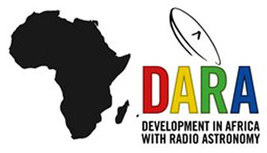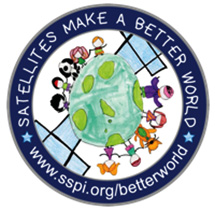The world is full of sharp disparities between the privileged and those struggling for access: access to good work, to knowledge, to the means to pursue their calling and preserve their communities. Around the world, dedicated people are using technology to close that gap. Technology that is literally out of this world.
Building a Better Future in Africa
 In the United Kingdom, they are building a better future for students in Africa. The University of Leeds and Goonhilly Earth Station in Cornwall are working with the South African Radio Astronomy Observatory to teach high-tech skills to African youth. The project, called Development in Africa with Radio Astronomy, is also supported by the UK Space Agency, Oxford and other British universities. It began as a research project – rebuilding an old satellite antenna as a radio telescope. Today, it is an award-winning international collaboration between science and industry.
In the United Kingdom, they are building a better future for students in Africa. The University of Leeds and Goonhilly Earth Station in Cornwall are working with the South African Radio Astronomy Observatory to teach high-tech skills to African youth. The project, called Development in Africa with Radio Astronomy, is also supported by the UK Space Agency, Oxford and other British universities. It began as a research project – rebuilding an old satellite antenna as a radio telescope. Today, it is an award-winning international collaboration between science and industry.
Since its founding, the DARA project has trained 140 students in the technologies of radio astronomy and has another 120 in the queue. The goal is to give students skills, confidence and a passion they can bring home – to finish their own astronomy projects, to get good jobs, to launch businesses and inspire their communities to reach for the stars.
Digital Connectivity in the Developing World
In the developed world, we take digital connectivity for granted. For more than four billion people around the world, online access remains a luxury far beyond reach. That causes people to leave places like East Timor and the Solomon Islands in search of a better future, while the place they call home slips further and further behind.
developed world, we take digital connectivity for granted. For more than four billion people around the world, online access remains a luxury far beyond reach. That causes people to leave places like East Timor and the Solomon Islands in search of a better future, while the place they call home slips further and further behind.
But across Asia, things are looking up. Way up. For the first time, affordable broadband is coming to the Pacific and the rural stretches of Asia, thanks to satellite. A company called Kacific is providing high-speed internet and easy-to-use ground equipment to local service providers across the region. These small businesses become stakeholders in their islands’ future and help stop brain drain. Kacific began service using existing satellite capacity in the region. When it launches its new satellite next year, the digital gap will begin to close in earnest.
 Disaster Relief via Satellite
Disaster Relief via Satellite
And when natural disaster strikes, satellites get people out of harm’s way. When a volcano erupted in the Pacific nation of Vanatau, it was coordination over satellite that made it possible to evacuate 10,000 people from the disaster zone.
That kind of coordination does not happen by accident. In 2018, two industry associations and the world’s top satellite operators reached agreement with the United Nations World Food Programme to help the world respond faster to disaster. The Crisis Connectivity Charter commits the partners to pre-position satellite equipment in countries at high risk for disaster, train users and give priority for satellite access to humanitarian agencies. It is an agreement to share the burden of disaster – and the savings in suffering, in human life, in economic loss will be almost too great to count.
These are companies and organizations dedicated to close the gap running down the center of the world. They are winners of the 2018 Better Satellite World Awards from Space & Satellite Professionals International, and because of them, things are looking up. Way up.

Produced for Satellite Executive Briefing by Space & Satellite Professionals International
See more stories and videos of satellite making a better world at www.bettersatelliteworld.com.





